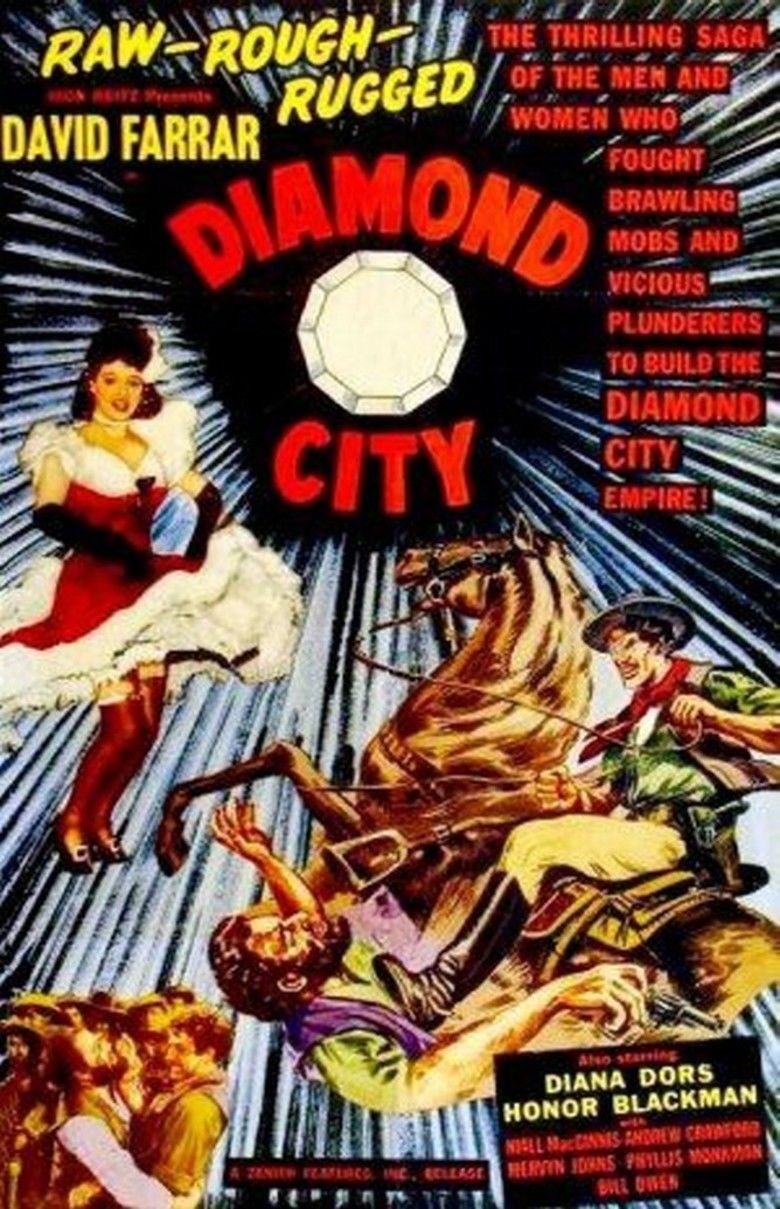Diamond City (film)
6 /10 1 Votes
Cinematography Reginald Wyer Country United Kingdom | 6/10 IMDb Genre Drama, Adventure Duration Language English | |||||||||||||||||||||||||||||||||
 | ||||||||||||||||||||||||||||||||||
Release date 1949 Cast (Stafford Parker), (Mary Hart), (Dora Bracken), (Pinto), (Hart) Similar movies The Lion King , Madagascar: Escape 2 Africa , The Wild , Madagascar , The Chronicles of Narnia: Prince Caspian , The Jungle Book | ||||||||||||||||||||||||||||||||||
Fallout 4 diamond city blues quest
Diamond City is a 1949 British drama film directed by David MacDonald and starring David Farrar, Honor Blackman, Diana Dors and Niall MacGinnis.
Contents
Plot
In 1870s South Africa, Englishman Stafford Parker tries to persuade Boer leader Jan Bloem to hand over control of a potential diamond field. This upsets Bloem's nephew Piet Quieman and businessman Muller; Muller has gotten rich through selling cheap rum to black workers.
New arrivals come to Hopetown: a missionary, Hart, and his daughter Mary, and David Raymond. A diamond is found on Bloem's territory. Parker persuades Bloem that he can maintain law and order and Bloem picks Parker over Piet and Muller.
Parker and a number of people from Hopetown set up a new establishment at Klipdrift. Muller tries to cause trouble but Parker beats him in a fight.
Klipdrift becomes a thriving town. David Raymond suspects Muller is buying diamonds directly from the natives, going around Parker's arrangement with Bloem. Eventually Parker confronts Muller who denies it.
Parker calls for a rule book to be drawn up and grows closer to Mary which causes saloon keeper Dora to be jealous.
Parker helps declare the first Diggers' Republic. Muller organises resistance but Parker defeats him. Parker realises that Mary has fallen for David. The diamond fields are annexed by Britain. Parker leaves to seek gold in some nearby mountains, leaving Dora.
Cast
Development
The movie was based on the true story of Stafford Parker who was elected president of the Diamond Diggers Republic in 1871.
It was announced in 1945 as Digger's Rest and was to star Stewart Granger from director Leslie Arliss. "This Parker was a born fighter, a great, husky guy", said Arliss. "He'd knocked around in the States as a young man and was tremendously impressed by the sheriff system, as he'd seen it practiced in the West." Patricia Roc was to play the Salvation Army girl with whom Parker falls in love. However Roc was named in a divorce case involving Fay Compton and Gainsborough reportedly dropped her from the film as a result.
Eventually the make starring role was given to David Farrar who had received acclaim for his performance in Black Narcissus. It was directed by David MacDonald, who had just directed The Bad Lord Byron and Christopher Columbus for Gainsborough. Diana Dors played the role of the saloon keeper when Jean Kent was unavailable. It was Dors' biggest part to date.
The film was seen as an attempt by producer Sydney Box to compete with Eureka Stockade (1949), another British film set and shot in a former colony.
Shooting
It combined location filming in South Africa with studio work in England. MacDonald arrived in South Africa in November 1948 for location filming. Studio work began at Denham in January 1949.
Filming was held up when David Farrar fell ill.
Bombardier Billy Wells taught Farrar how to box for the film.
Reception
The film's box office performance was poor.
References
Diamond City (film) WikipediaDiamond City (film) IMDbDiamond City (film) themoviedb.org
